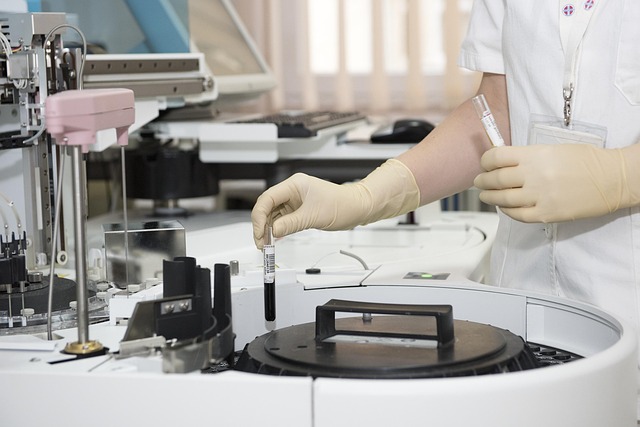Embedded robotics, once a niche field confined to industrial production lines, has surged into the forefront of modern medicine. By integrating miniature robotic systems directly into medical devices and implants, engineers are creating tools that are more responsive, precise, and adaptable than ever before. This convergence of hardware, software, and biology is driving a new wave of health innovations that promise to transform diagnostics, treatment, and ongoing patient care.
Embedded Robotics in Diagnostics: Speeding Up Insight
The first wave of embedded robotics revolution is occurring in diagnostic equipment. Micro‑robotic actuators inside imaging devices, such as ultrasound probes, allow real‑time adjustments to probe orientation and focus without requiring a human operator to manually reposition the hardware. This leads to sharper images and reduces the time clinicians need to interpret scans.
- Automated probe alignment improves image consistency across multiple patients.
- Micro‑actuation reduces mechanical wear, extending device lifespan.
- Real‑time feedback loops enable adaptive scanning protocols tailored to individual anatomy.
Miniaturized Pathology Tools
Embedded robotics also powers next‑generation biopsy needles that can navigate through dense tissue by rotating and translating under computer guidance. These needles can be steered along pre‑computed trajectories, minimizing tissue trauma and ensuring samples are taken from the most relevant tumor regions.
“The ability to guide a needle with millimetric precision inside a living organ is a game changer for pathology accuracy,” says Dr. Elena Ramirez, a leading oncologist.
Precision Surgery: From Robot Arms to Micro‑Assistants
Robotic surgical platforms have long been associated with large, complex instruments that sit outside the patient. Modern embedded robotics now places miniature actuators directly inside surgical tools, providing surgeons with enhanced tactile feedback and haptic guidance.
- Embed flexible micro‑actuators into scalpels to modulate cutting speed in real time.
- Integrate pressure sensors into forceps to prevent excessive force on delicate tissues.
- Use onboard micro‑processors to compute optimal tool trajectories during the procedure.
These advancements reduce operative time, lower the risk of complications, and can even enable surgeons to perform procedures remotely with a level of precision that rivals in‑person intervention.
Robotic Assistance in Minimally Invasive Procedures
When performing laparoscopy, embedded robotic modules within endoscopic instruments can automatically adjust angles based on visual feedback, allowing surgeons to navigate tight spaces with minimal instrument collisions. This self‑correcting capability improves ergonomics for surgeons and enhances patient safety.
Remote Monitoring: A New Standard of Care
Wearable health monitors now incorporate embedded robotics to adapt sensor positioning based on physiological signals. For example, a smart cuff that inflates and deflates on demand can maintain optimal contact with the skin, ensuring accurate blood pressure readings even during movement.
In hospital settings, patient beds equipped with micro‑actuators can adjust head and foot positions automatically in response to telemetry data, aiding in the prevention of pressure ulcers and improving sleep quality for critical patients.
Tele‑Health Enhancements
Embedded robotic actuators in tele‑health kits can orient cameras or microphones to follow patient movements, delivering a more natural and immersive consultation experience. Combined with AI‑driven analysis, these systems help remote clinicians capture high‑quality vital sign data with minimal patient involvement.
Rehabilitation and Assistive Devices: Empowering Mobility
Rehabilitation robotics is moving beyond stationary exoskeletons to dynamic, patient‑specific systems. Embedded actuators within orthotic braces can adjust stiffness in real time, responding to the wearer’s gait pattern and providing tailored assistance that promotes natural movement patterns.
- Micro‑actuated ankle braces that adapt to walking speed.
- Smart knee supports that modulate torque based on joint angle and muscle activation.
- Real‑time biofeedback displayed via haptic signals to encourage correct posture.
For patients with spinal cord injuries, implantable micro‑robotic stimulators can deliver patterned electrical pulses that synchronize with residual neural activity, improving muscle activation and restoring partial mobility.
Daily Living Assistance
Embedded robotics in prosthetic limbs now allow fine manipulation of objects, thanks to miniature servo motors that control grip force and finger positioning with unprecedented precision. Combined with sensory feedback from the skin, users experience a more natural sense of touch and control.
Data Integration and AI Synergy
Embedded robotics systems are not just mechanical marvels; they are also sophisticated data collectors. Sensors embedded within these devices stream continuous streams of biomechanical, physiological, and environmental data to cloud‑based platforms.
Artificial intelligence algorithms analyze this data in real time to identify patterns that predict health events before they become clinically obvious. For instance, a micro‑robotic implant monitoring cardiac rhythm can flag subtle arrhythmias and trigger alerts to both patient and physician.
“The fusion of embedded robotics and AI turns passive devices into active guardians,” remarks Dr. Samuel Lee, a biomedical data scientist.
Personalized Medicine on the Move
By integrating patient‑specific models into embedded robotic controllers, clinicians can adjust therapeutic parameters—such as drug delivery rates from implantable pumps—based on real‑time feedback. This level of personalization reduces adverse reactions and improves treatment efficacy.
Ethical, Regulatory, and Workforce Implications
The rapid proliferation of embedded robotics in health raises critical questions about safety, data privacy, and workforce displacement. Regulatory bodies are developing frameworks to assess not only the mechanical reliability of these devices but also the cybersecurity protocols that protect patient data.
From a workforce perspective, the adoption of embedded robotic tools demands new skill sets. Surgeons must learn to program robotic parameters, while technicians must maintain and troubleshoot micro‑actuator systems—creating opportunities for interdisciplinary collaboration.
Patient Consent and Transparency
Because embedded robotics often involve continuous data collection, clinicians and device manufacturers must ensure that patients fully understand how their information will be used. Transparent consent processes and clear data governance policies are essential for maintaining trust.
Looking Forward: A Future of Intelligent Care
As material science, power delivery, and computational capabilities advance, embedded robotics will become increasingly lightweight, efficient, and ubiquitous. We anticipate a future where every implantable or wearable device not only performs its primary function but also adapts autonomously to the patient’s evolving needs.
Imagine a pacemaker that senses stress levels and adjusts heart rate output accordingly, or a smart prosthetic that learns to anticipate a user’s intent from subtle neural patterns. These visions are already materializing in prototype stages, propelled by the relentless march of embedded robotics innovation.
Ultimately, the integration of embedded robotics into healthcare represents a paradigm shift: from reactive treatment to proactive, data‑driven wellness. The journey ahead is as challenging as it is exciting, but the potential benefits for patients, clinicians, and society at large are immense.



